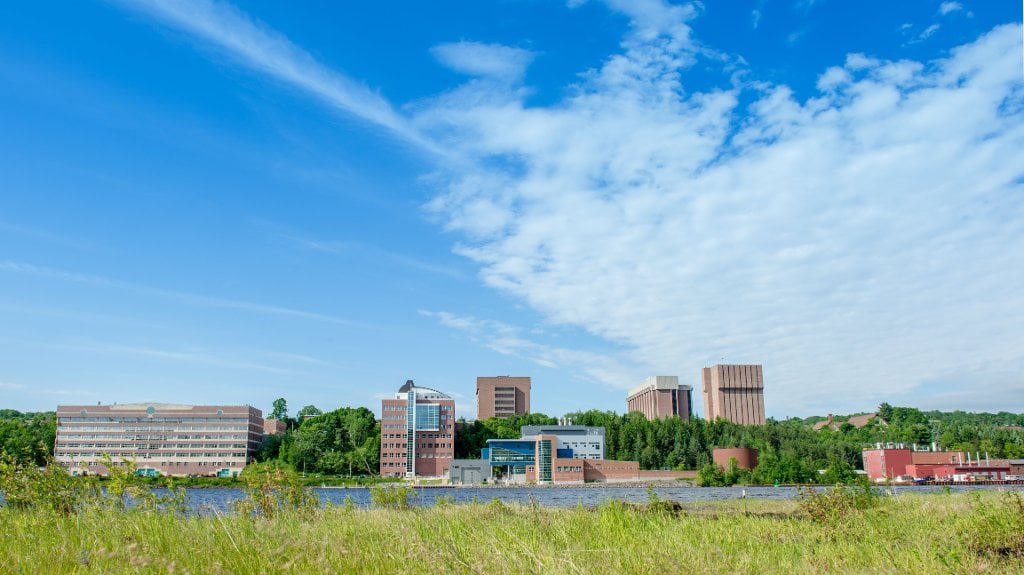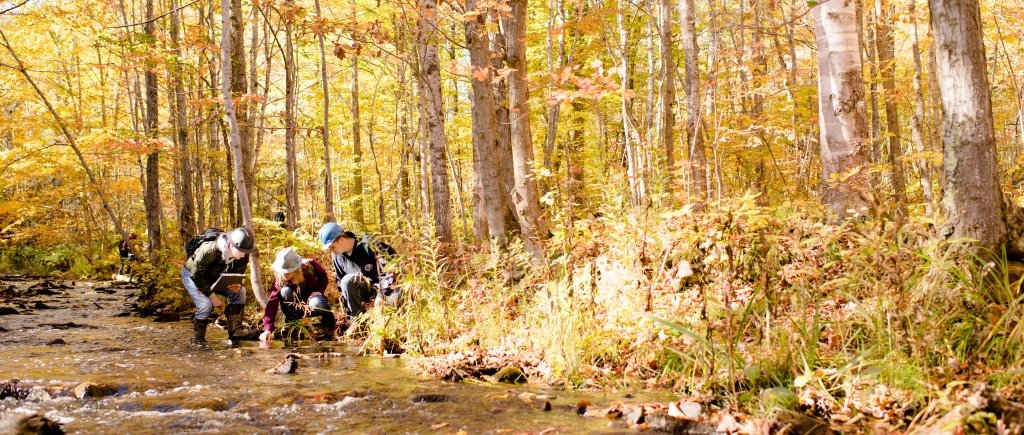Not all of us can be scientists—but that doesn't mean we can't appreciate science. In #scicomm, non-sci creatives get a big picture, meta-view of the research process. Allison Mills shares her observations from ISSRM.
International Symposium for Society and Resource Management
At first, I couldn't understand what acronym people were using: I-S-what-what? Maybe, I thought, it's a holistic medical gathering (eye-sacrum-something) or maybe the double S was a glitch. I had to write out "International Symposium for Society and Resource Management" before my brain could compute ISSRM.
And the acronym still trips me up.
You see, I'm a dyslexic writer. I know. How very ironic. :eyeroll:
But, really, spelling, copyediting, and acronyms are a drag—and these are three staples of my job as a science writer at Michigan Tech. I help researchers interpret their work, and scientists in academia love acronyms almost as much as federal agencies do. So, in a metaphorical nutshell, my job is to unpack an acronym, define it, breath some life into it, and then share with other people. I did just that for ISSRM last week, but what I really love about this conference is the opportunity to observe the world's observers.
Scientists as Observers
As our staff videographer Ben Jaszczak explained to me—and will elaborate on in his own Unscripted guest blog soon—this is a weirdly meta process. In our roles, we watch scientists who are observing various phenomena. By writing these blogs, we're writing down observations about observers observing.
And I can't do that in a regular university news story. As a science communicator, I'm tasked with explaining the little morsels of science as the delectable, but tiny, bread crumbs they are and we don't often get to talk about the loaf of capital-S Science, let alone the artisanal baking process.
With all that gluten in mind, let's look at what holds together some of the research presented at ISSRM.
Keep It Together
I am a general science writer—an omnivore of quantum pastries and sociology buns alike—but at ISSRM, I felt like my people arrived. Trained specifically as an environmental science and natural resource journalist with a background in geoscience, I can see and appreciate the connectivity that drives the interdisciplinary research at ISSRM.
Now, that word—interdisciplinary—has its own layers. The journal Nature dedicated a whole issue to exploring what it means; Alexander Refsum Jensenius, a music technology researcher from the University of Oslo, explains some of its prefix friction. Much like doing the dishes, everyone wants to eat and only a few are willing to follow up. In our last Research magazine, I wrote about some of the interdisciplinary work that Michigan Tech researchers do, and learned about transdisciplinary and translational work. Basically, good research these days needs many hands, eyeballs, and brains to be successful—and while rigorous, esoteric, lone marksmanship is still greatly rewarded within the Ivory Tower, transplanting complex research into usable forms between disciplines and outside academia can have significant impact, as laid out by the numbers.
A great example of this integration comes in the form of methylmercury. The actual compound is nasty stuff and it takes more than a chemist to understand its impact; the collaboration formed around the chemical is beautiful and challenging.
Beyond Methylmercury and Disciplines
A group of Michigan Tech researchers—a historian, two environmental engineers, and a doctoral student studying environmental policy—presented their interdisciplinary work seeking to answer the question, "When can we eat the fish?" Now that's an unusual research question; oftentimes the language is more constrained. And indeed it was, just in a different way: That core question came out of research development done in tandem with the Keweenaw Bay Indian Community. And they didn't want to know what was the standard deviation of suitable levels of mercury consumed in micrograms. They wanted to know when they could eat the fish they caught. Unfortunately, there's no simple answer, but in seeking to answer that question, the research team reframed how they approached the complex biogeochemical modeling and mapping.
"Helping frame the research is the big part of collaborating with social scientists," says Hugh Gorman—the historian—who co-presented and serves as the chair of the Department of Social Sciences. "But we all have to think outside our silos."
Gorman explains that oftentimes scientists from other disciplines have already framed the research and simply want to plug in a social science perspective to complement their own. Ana Viseu in her Nature column points out what's flawed with that approach—and how to remedy it. Gorman says that the initial ideas within the methylmercury project did start that way (like "How do we model humans?") Yet because the social and natural sciences were considered together early on, they were able to integrate governance and cultural aspects up front rather than as a footnote to the environmental models.
Enter the Interdisciplinary
The process of collaboration between disciplines reflects the iterative nature of science. If science is about pushing into unknown territory and discovering insight and knowledge, then interdisciplinary research is simply an extension of that. It's like Snickers Almond—and let's be real—it just tastes better.
Plus, substituting almonds for peanuts doesn't mean the caramel and chocolate has to go—there is no reason to dilute the scientific rigor of each expertise. It just means you have to package it differently. And communicate better.
Communication is by far the hardest part and it requires constant maintenance to keep a project flowing, says Kelly Jones, an economist at Colorado State University. She co-organized a session highlighting the team she works with on assessing impacts of paying for watershed services in Mexico and the team is the paragon of collaborative, in-depth research spanning policy programs, hydrological models and mapping, network analysis, and community engagement. In particular, I was fascinated by Mariana Nava-Lopez from SUNY and her presentation on Mexico’s matching programs There were also a lot of acronyms (in Spanish, too.)
Throughout the talk—even though I sometimes got lost trying to sort out terms like PES (Payment for Ecosystem Services) and FIDECOAGUA (Program of Payment for Hydrological Services in the Gavilanes River sub-watershed)—I was struck again and again by the level of detail and nuance brought up. Yet Nava-Lopez, Jones, and their team all managed to transcend their individual perspectives to create a whole framework—a bigger perspective that could actually make a difference for farmers and communities.
Doing that is not easy.
I have worked with two of the project collaborators before: Alex Mayer, an environmental engineer at Michigan Tech, and Kathy Halvorsen, who holds a joint appointment in social science along with forest resources and environmental science. Mayer is the first person who told me about transdisciplinary work and he something he said has stuck with me.
"Collaborating with so many people helped me go from solving pure science problems to solving people problems." Alex Mayer
That inspiration—from within or through the support of others—is the fire that transforms the dough of research into the loaf of Science. Not all of us get to feel its heat, at least not every day. For me this week, sitting in on ISSRM and receiving slices of research from around the world, I'm reminded that the oven is still hot. And there is a lot of baking to do.
Michigan Technological University is an R1 public research university founded in 1885 in Houghton, and is home to nearly 7,500 students from more than 60 countries around the world. Consistently ranked among the best universities in the country for return on investment, Michigan's flagship technological university offers more than 185 undergraduate and graduate degree programs in science and technology, engineering, computing, forestry, business, health professions, humanities, mathematics, social sciences, and the arts. The rural campus is situated just miles from Lake Superior in Michigan's Upper Peninsula, offering year-round opportunities for outdoor adventure.






Comments